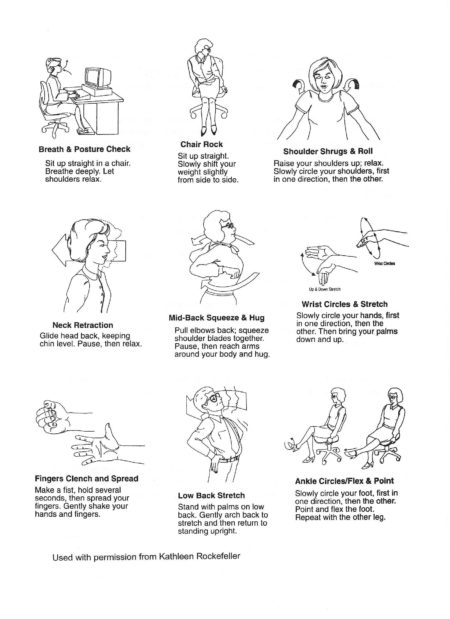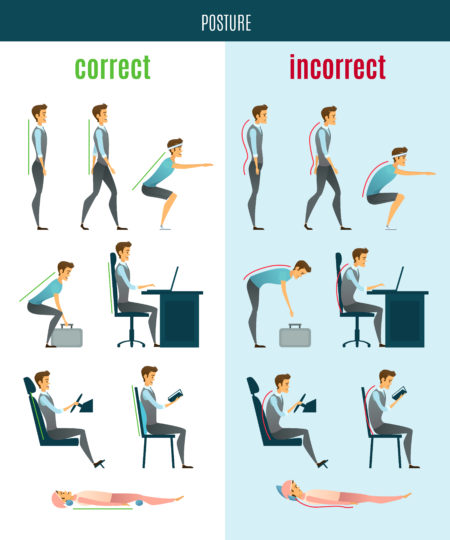
Musculoskeletal disorders (MSDs) affect the muscles, nerves, blood vessels, ligaments, and tendons. Exposures at work include lifting heavy items, bending, reaching overhead, pushing, pulling heavy loads, and repetitive motions. Exposure to these known risk factors for MSDs increases a worker’s risk of injury. Work-related MSDs can be prevented. Injuries resulting from poor ergonomic design are sometimes acute, such as sprains, but are often cumulative such as carpal tunnel syndrome.
Work-related musculoskeletal disorders are the leading type of occupational injury in Washington State. They incur the greatest costs to industry and the workers’ compensation system.
Examples of Musculoskeletal Disorders (MDSs)
- Carpal tunnel syndrome
- Tendinitis
- Rotator cuff injuries (affects the shoulder)
- Epicondylitis (affects the elbow)
- Trigger finger
- Muscle strains and low back injuries
Every part of the body is affected by the ergonomic design of the workplace.
Factors that contribute to ergonomic design include:
- The amount of repetition involved with the job
- The duration of applied force from pushing, pulling, lifting, or gripping
- The amount of force exerted or the weight of the load
- A person’s posture, reach and grip positions
- Heights and distances to working surfaces, materials, and supplies
- Age, physical stature, weight, physical ability
Follow the safety tips below:
Follow the safety tips below to help improve the ergonomic performance in your work area:
GENERAL
- Stretch the muscles several times a day before starting work. Many injuries occur after coffee or lunch breaks – this is because many people think of stretching at the start of the workday, but don’t realize their muscles have shortened during a break and need to be stretched again.
- Know your physical Don’t attempt to perform activities when the work environment is not suited to you.
BACK AND LEGS
- Have materials and supplies raised to waist level so bending is minimized. This will help avoid lower back sprains and pulled hamstrings. If bending is required, bend at the knees and use the leg muscles to raise and lower the bod
- Avoid work conditions where the shoulder blades are This is common in office environments and tight working areas.
- Move keyboards away and down to a location where the arms are relaxed, elbows comfortably at sides and forearms parallel with the floor.
- Always ask for help if loads are too heavy or awkward.
ARMS, WRISTS AND HANDS
- When working with power tools or hand-held objects, avoid situations where the wrist is
- Carry loads close to the body with a clear line of sight to the travel path.
Avoid carrying loads away from the waist or reaching for extended periods. - Avoid using tools that vibrate continuously or aggressively or require prolonged pinching or
EYES AND NECK
- Computer monitors should be at eye level and the neck should not be tilted up or
Use a document holder for prolonged keyboarding. - Ensure there is proper lighting in the work areas and computer monitors are positioned to minimize eyestrain (ideally, without a window behind the monitor).
Download a PDF of this Toolbox Talks in English
Download a PDF of this Toolbox Talks in Spanish


